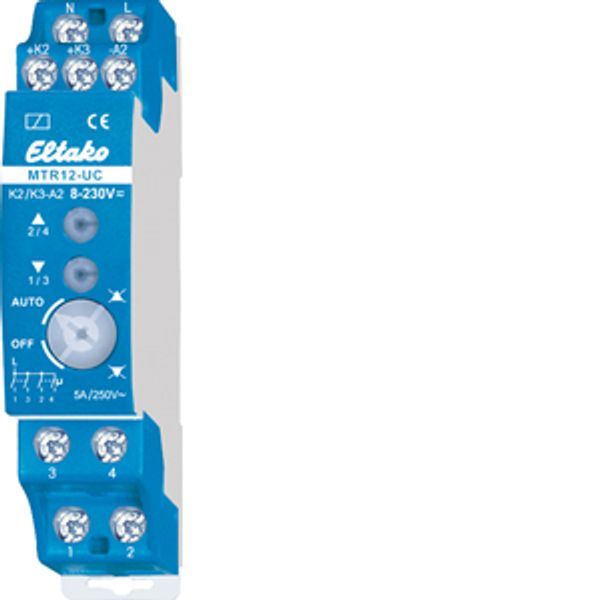Catalog
Automatics and control
Cables and wires
Installation
Show All
Alarm and security systems
Cable bearing systems
Cable connectors
E-mobility
Fixings
Installation pipes
Tools, measuring instruments and protection
Cable inlet
Data and telecommunication
Electric box (breaker panel)
Industrial connections and blocks
Installation boxes
Lighting protection
Mounting materials
Power supply elements and devices, reactive power compensation
LED lighting
Lamps
Lighting accessories
Luminaires
Show All
Emergency luminaires and accessories
Explosion proof luminaires
Flashlights, batteries and acessories
Industrial lights
LED Panels and accessories
LED strips, modules, profiles and accessories
Linear and modular luminaires
Street and park luminaires
Track lights and accessories
Built-in mounting lamps
Ceiling mounting lamps
Festive lightings
Floor lamps
In-ground luminaires
Machine and work bench luminaire
Pendant lights
Recessed lights
Surface mounting lamps
Table lamps
Wall mounting lamps
Renewable energy
Switches and sockets
Ventilators, pumps and gate operators
Show All
Accessories (ventilators, pumps and gate operators)
Air freshener
Air inlet/extraction units
Air treatment
Boilers and heaters
Cooling systems
Distributors
Fans
Filters/separators
Fittings for doors and gates
Heating appliances
Industrial fans
Trace heating cables and electric surface heating
Ventilation and air conditioning systems
Register to unlock your exclusive B2B prices and start shopping. Sign up now!
- Home /
- Switches and sockets /
- Control devices for switches and sockets /
- Motor isolating relay, 2 + 2 NO contacts 5A
- Home /
- ELTAKO +
- Switches and sockets /
- ELTAKO Switches and sockets +
- Control devices for switches and sockets /
- Motor isolating relay, 2 + 2 NO contacts 5A

Motor isolating relay, 2 + 2 NO contacts 5A
In stock: No
Vendor stock: No
Minimal order quantity: 1
Price (excl. VAT):
47,17 €
EAN: 4010312205211
MPN: 22400601
Package: 1
Estimate delivery time at our warehouse (approx.):
2-4 weeks
Technical Information
| Item condition | New |
| Manufacture name | Motor isolating relay, 2 + 2 NO contacts 5A |
| Brand | ELTAKO |
| Categories |
Control devices for switches and sockets
|
| Country of origin | CN |
| Harmonized System Code | 8536 4190 00 |
| Nominal voltage | 250 V |
| Mounting method | DRA (DIN-rail adapter) |
| Rated current | 5 A |
| Frequency | 50 Hz |
| Number of connectable motors | 2 |
| Substation input | No |
| Central input | No |
Packing details
| Packing level 1 | 4010312205211, 4010312205211 |
| Packing level 2 | 4010312205211 |
| Packing level 3 | 4010312205211 |
Downloads
Description
Motor isolating relay, 2+2 NO contacts not potential free 5A/250V AC for one or two 230V-motors. Standby loss 0.5 watt only. Modular device for DIN 60715 TH35 rail mounting. 1 module = 18mm wide, 58mm deep. Universal control voltage 8..230V UC. 230V supply voltage. The tube-mounted motors of shading elements and roller shutters must not be connected in parallel, or reverse voltages will occur through the limit switches, ultimately causing failure of the motors. For one motor and if the control voltage and the motor voltage are 230V, one EGS12Z-UC is adequate. Where more than one motor is controlled by an EGS12Z-UC or in case the control voltage is different, one MTR12-UC must be connected to two motors. It must be remembered that the MTR12-UC devices, while they can be operated in parallel, require unassigned contact outputs K2/K3 of the controlling EGS12Z-UC. These have to be connected to terminals K2/K3 of the MTR12-UC. 1/2 = motor 1, 3/4 = motor 2. The functions UP and DOWN may be blocked or switched off entirely by a rotary switch. This block applies only to the max. 2 connected motors. Therefore single shading elements or roller shutters can be completely or partially excepted from the automatic function of an over-all control.
